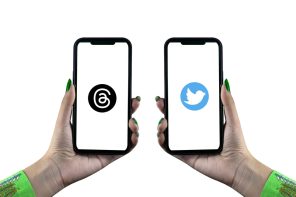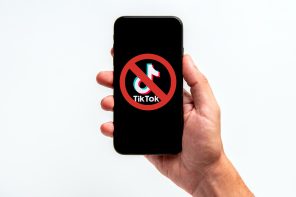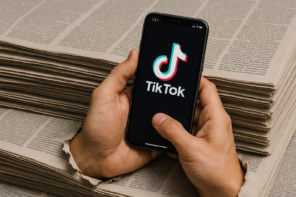
Friday October 2, 2020
Instagram Marketing: 10 Steps to Reach Your Business Goals Via Instagram
Instagram boasts of more than 1 billion active users every month, and more than 500 million active users every day. Given the large number of people on the platform, chances are your target audience also uses Instagram. Hence it is no surprise that businesses across sectors have invested in their presence on the platform:
- Product-based B2C businesses like Nike and McDonald’s.
- Art and Culture brands like the publishing house Penguin Random House and the actress Reese Witherspoon.
- Governments like the UK government and the Indian government.
- B2B companies like SaaS company Zapier, WeWork that offers shared workspaces, General Electric of home appliances and clean power, among others.
Not only is your target audience likely on Instagram, but it is also open to connecting and buying from you on the platform. According to data by Facebook, 90% of accounts follow a business on Instagram. 200 million people visit a business profile every day — two-thirds of whom don’t even follow the profile. And according to a study of 21,000 people, 46% of users have made an online or offline purchase after seeing a product or service on Instagram.
Here are the 10 steps to use the social media platform to reach your business goals.
How to Grow Your Brand, Generate Leads, & Get Customers Via Instagram
1. Define Your Goals
Your business objectives, content strategy, and content marketing goals would determine your goals, audience, and content for Instagram. “Your content marketing strategy should define your social media marketing strategy – not the other way around,” says Content Marketing Institute.
What your goals are for the platform would determine what actions you want the users to take when they see your posts or land on your profile. Usually, your business would have goals across the three areas:
- Awareness: followers, impressions, and reach.
- Engagement: comments, likes, and shares on your posts.
- Conversion: referral traffic to your website via IG, number of leads generated via that referral traffic, and the number or
- percentage of those leads that converted to customers.
But it is good to know that for B2B businesses, social media, except Linkedin, is best for awareness and engagement, even as it might help in generating some leads. “The (B2B) companies…realize the importance of using social media for branding instead of just looking for leads,” says Sprout Social.
According to Conversion XL, the average Click Through Rate or CTR on Instagram is 0.94%. Knowing this helps to keep the KPIs and expectations that are achievable.
2. Market Research
Before you start posting, it’s good to have an idea about what others are posting about on the same subjects. You can do this by:
- Checking your competitors’ profiles on Instagram
- Checking industry-related hashtags on the platform to explore which accounts are using those hashtags
Conducting an audit of the accounts to see which posts get good engagement, what hashtags they use, and how fast they are growing would help set a benchmark for your own account, writes HubSpot.
3. Visual Aesthetic
Just as you have a specific style and tone of voice when writing copy for your website, your Instagram posts should also have its own style. It helps your posts have a “nice consistent familiar feeling”, says Buffer.
You can do this by defining the following in line with your brand personality and values:
- a colour palette
- a font style
Here is a good guide on colours associated with each brand archetype, i.e brand values and personality.
To maintain consistency with your brand outside of social media, you could use the colour palettes and fonts used on your website, for example, instead of defining new ones for Instagram.
For example, as you see below, the posts on HubSpot’s account have used at least one of its brand shades of orange, green, black, or white. The text on the pictures is also in the same format.

4. Optimise Your Profile
Optimising your profile means filling it in so that any user who lands on your account finds it active and professional.
To do this:
- Add at least 9 photos before you start engaging with other accounts.
- Add an account picture.
- Write a bio.
Describe your company and add a hashtag related to your industry. You may also choose to add a branded hashtag that is unique to your company name. This helps users know what hashtag to search for in order to find posts related to your company.
- Add a link to the ‘website’ section.
This is one of the most important things you can do for lead generation on Instagram. This is the only place on Instagram — besides stories and paid advertisement — where you can add a link. Make sure this is relevant and related to what action you want users to take. You can change this link as often as you want.
Check some examples below:

At Curzon, we have currently added a link to our latest blog post.
An artist has linked to her e-commerce website.
A health consultant is directing users to her consultation page.
HubSpot is directing people to click and listen to their podcast.
One way to get around the limit of posting just one link is to use tools like Linktree or Bitly. They allow you to create a link that leads to multiple links. For example, links in Marie Forleo and Robin Sharma‘s bios lead to several resources instead of any one specific one.


- Add Story Highlights
Keeping your Stories on your profile for longer than 24 hours is useful not just to increase ROI on content created for Stories. It also helps your profile look “fleshed out”, according to Shopify.
It also allows you a chance to highlight different areas of your business separately like Awards, Podcast, Press, User Reviews. Here is a good example from actress Reese Witherspoon who has created a different Highlight for each of her TV shows, besides other things like Youtube Channel and Book Club (which aren’t visible in the screenshot).

5. Decide a Posting Frequency You Can Be Consistent With
In order to grow followers, gain engagement, and have the Instagram algorithm consider you a quality account, post consistently. “The more frequently and consistently you post, the more likely your audience will see and engage with your content,” says Later.
But maintaining a consistent schedule is more important than having a high frequency which you can’t sustain long term, writes Neil Patel. This means that even if you can only post 2 times a week, it is better to do that throughout the year than posting several times a day but only for a month. It is because once you start to decrease the frequency, your engagement would go down and the Instagram algorithm will take that as a measure for decreasing follower interest and act accordingly.
Hence, decide on a frequency of your posts, for example, every day or once a week, with which you can be consistent with. This would depend on your human resource and time available to manage your Instagram account.
Posting consistently also means finding the best time to post content. It may require some testing to see when you are seeing the best results from your specific audience. In general, 11 am on Wednesday and 10 – 11 am on Friday are the best times for Instagram.
6. Create and Post Different Types of Content
In order to post consistently and continue to maintain follower interest and engagement, it is good to focus on different types of content. Users “want to see diversity; they’ll get bored or annoyed if you just use one type of post for too long,” writes Ana Gotter.
Hence here are some ideas for different types of content you can post:
- Data-driven images
- Motivational quotes
- Employer stories
- Client/customer stories
- Behind-the-scenes
- Workplace culture/events
- DIY or how-to content
It is good to remember that since people are on social media to be entertained, posting content that “tells stories, appeals to emotion, and sparks conversation” works better than the one talking about your product or services in a salesy way, writes SproutSocial.
6. Encourage User-Generated Content or UGC
Just like opening up your blog for guest blogging is a way to generate quality traffic without having to create all the content yourself — user-generated content works the same way on Instagram.
You could encourage followers and fans to create content for you, which you could then repost and reshare. It is useful because:
You can use the content that users create, helping you take some load off from content creation.
It increases engagement for your account as people tag you in their posts
It brings new users to your account — usually people who follow the people that create content for you
You can encourage user-generated content by hosting contests and giveaways. Different types of contests are:
Photo contests. For example, asking people to share pictures of using your product creatively
Caption contests. For example, asking people to caption a photo related to your product, service, or business
Requesting short under 1-minute videos from users on particular themes and hashtags related to your business, such as your company’s mission.
Besides specifically requesting your followers to create content for contests, you could also search for relevant posts by yourself. Now download the post using sites like this, and post it using #regram #repost hashtag and giving credit to the user via tagging.
7. Use Instagram Features like Stories, Hashtags, Stickers, and more
Instagram continues to bring in new features to creatively engage the users. Hence, using them to make the optimum use of the platform makes sense. Using some features like hashtags and stories are also very critical to success on the platform because of their unique abilities for engagement. Different features on Instagram are:
- Hashtags
Hashtag usage is “one of the most significant factors” for Instagram success, says a Shopify blogger. It is because unlike Twitter and Facebook where people can search by just putting in words or phrases, in Instagram you search via hashtags. You can use up to 30 hashtags on a post, so make use of it. This is how you make the most out of this feature: -
- Use both broad and niche hashtags
Using a combination of three kinds of hashtags across the buyer journey is a good strategy. For example, for a mental health app, this can look like: broad tags like #personaldevelopment, little specific tags like #mentalhealth to niche ones like brand hashtags as well as service/product-based ones like #mentalhealthapp. - Use both high-competition and low-competition hashtags
You should research the hashtags first by putting in a few tags to see how many posts each one has. The ones with a high number of posts would likely be followed by more people but this also means more people are using that. Low-competition hashtags, on the other hand, might help you get noticed easily. Hence, again, using both types of hashtags is a good strategy. You can change and experiment with this with each post.
- Use both broad and niche hashtags
- Stories
A study showed that 62% of people became more interested in a brand or product after seeing it in a Story.The Instagram algorithm shows only that posts to users that a user is likely to like and engage with, determined based on its past activity. But when it comes to stories, all stories show up on the top of the user screen — hence giving a chance to brands to be on top of their mind.If you have more than 10,000 followers, you are also able to have a “swipe up” link to stories. This is good for linking to whatever you are trying to promote at the moment. - Caption
Add captions to images. Some brands go by short captions, while some go by longer captions or microblogging. You can add 2000+ characters in your captions. Hashtags would also be a part of your caption. - Reels
Reels is a recently released feature on Instagram, copied from TikTok after the latter’s ban in India and its uncertain future in the US.
It allows you to edit 15-second multi-clip videos with audio and effects. Reels show up on people’s explore pages. Hence, posting Reels introduces your account to new audiences. - Live
Lives help you engage directly with your followers in real time on video. You could also hold lives with your peers or other brands — hence allowing yourself to be seen by that account’s followers as well. - Location filter
Adding a location to posts helps people feel connected and find the posts via a location search. You can add appropriate locations to posts about events and customer stories. - Stickers
In stories, using interactive stickers like Polls, Questions, and Slider increase engagement and let you interact with your audience. Dunkin’ Donuts saw a 20% lower cost-per-view when they used the poling sticker.
8. Engage
Social media is all about engagement and conversations. Besides using the above stickers and connecting with them on Live, you should also respond to their comments, thank them in DM when they share your posts on their stories, and reshare their posts about your brand.
9. Influencer Marketing
It involves collaborating with popular figures in your niche who have some overlaps in target audience with yours. Influencers have the power to influence people because of their reach, engagement, and trust. These can be local journalists, tv or movie celebrities, bloggers with a huge readership.
These collaborations cost a lot, depending on the popularity of the influencer.
10. Sponsored Advertisements
Advertisement allows you to show your ad to people who are not following you, based on the demographics of the target audience you set for it. The best way to choose the post to use as an ad is to look at your top-performing post. Alternatively, you can create a custom post for the ad.
Curzon PR is a London-based PR firm working with clients globally. If you have any questions, please feel free to contact our Business Development Team bd@curzonpr.com







Follow us